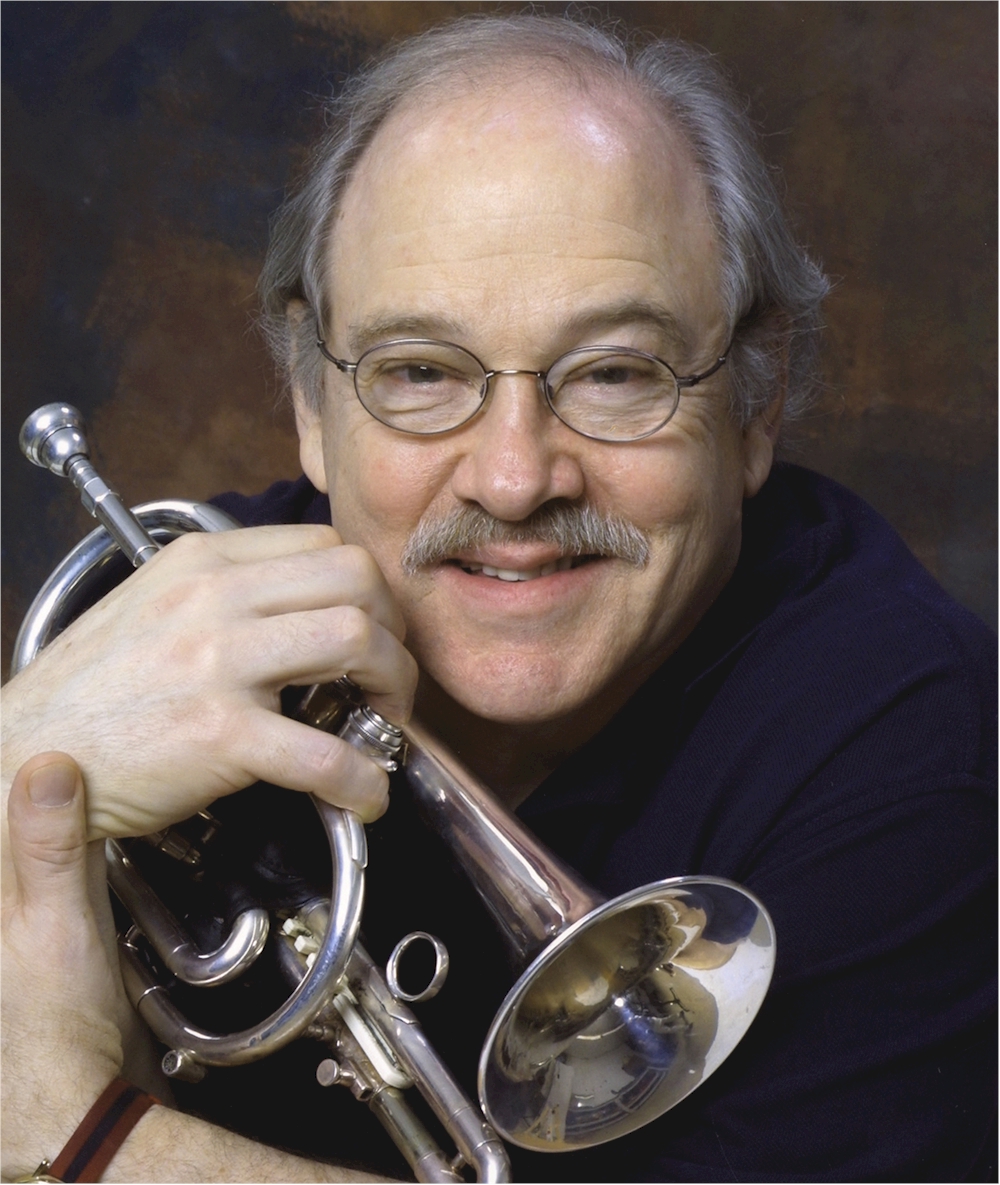
Jim Cullum. Photo courtesy Jim Wadsworth Productions.
This radio show was first broadcast in 1999 and is devoted to Jim Cullum and the music he has devoted his life to preserving and presenting. When this broadcast was aired, bandleader Cullum had been playing his cornet and leading his seven-piece traditional jazz band for almost 40 years in his nightclub The Landing, located on the river in his home base San Antonio, Texas. Here, Jim talks about his jazz heroes, musicians who inspired his career, and he presents a handful of his all-time favorite tunes, recorded live at The Landing as part of this broadcast series.
Jim Cullum’s musical taste ranges from traditional jazz and swing to ballads and the blues, from classics of the American Popular Songbook to new compositions created by band members. Highlights of the Cullum Band’s repertoire includes their original composition for jazz band and symphony, a jazz transcription of Porgy and Bess, New Orleans-style classic jazz from the early 1900s and fresh, new arrangements of songwriters Jerome Kern, Harry Warren and Harold Arlen and more.
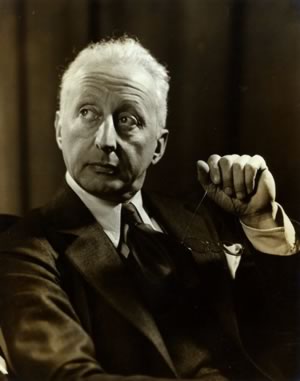
Jerome Kern. Photo courtesy of The Library of Congress.
Explaining his interest in the music of Jerome Kern, Jim says, “Kern’s music is a great vehicle for playing jazz. There are things about it, like the motion of his chord progressions and the beauty of his melodies that make improvising easy and natural. Jazz musicians have always gravitated towards playing Kern compositions. My hero Bix Beiderbecke recorded “Old Man River” in 1928 when it was still a brand new song.”
This broadcast features a Cullum band live performance of Jerome Kern’s composition “Cotton Blossom“ from the overture of his landmark 1927 musical Show Boat. “Old Man River,“ also heard here, is the best-known song from the stage musical. Band pianist John Sheridan wrote the arrangements for Jim Cullum’s Show Boat project.
“Deep Blue Melody“ was composed by bandleader Don Albert and recorded in 1936 in San Antonio by Albert’s swing band. Don Albert’s outfit was a standout among the “Southwest territory bands” of the era. These regional big bands travelled thousands of miles by car or band bus, crisscrossing state lines throughout the dusty Southwest in the Depression, playing dance halls, tent shows and occasional concert venues. About the tune, Jim Cullum says, “To the best of my knowledge no one else has ever recorded it, I fell in love with it years ago and we still play it all the time.”
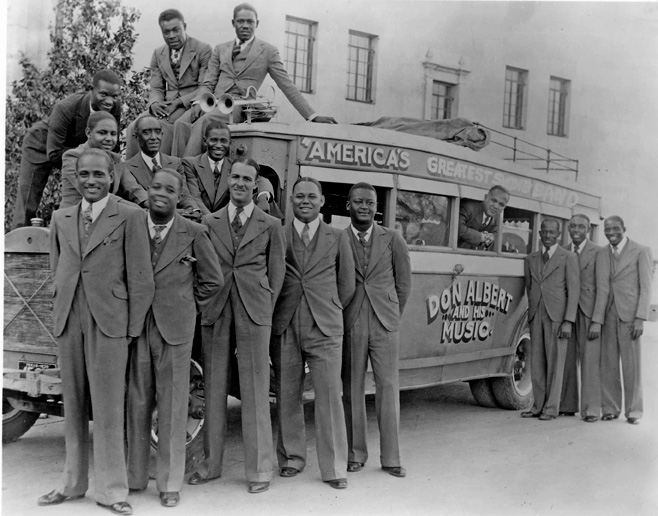
Don Albert Orchestra tour bus. Photo courtesy of Institute of Texan Cultures.
In 1988 Jim Cullum initiated a remarkable collaboration with pianist and arranger John Sheridan— a jazz transcription of George Gershwin’s “folk opera” Porgy and Bess. Heard here, “I Got Plenty O' Nuttin'“ is one of many tunes from the project that lends itself well to the traditional jazz interpretation for which the Cullum band is best known.
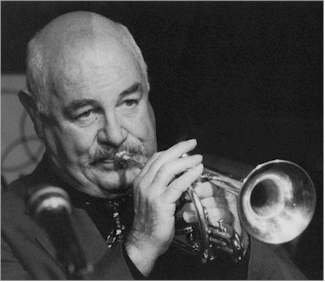
Cornetist Bob Barnard. Photo courtesy of the artist.
One of Jim Cullum’s favorite collaborators is Australian cornetist Bob Barnard. Jim says, “I first heard a recording of Bob about 20 years ago and realized right off the bat that here was a giant, one of the all-time cornet greats. Later I performed with Bob at the Summit Jazz Festival in Denver. Since then we’ve played together many times, both in the United States and Australia.” About Bob’s playing Jim says, “He’s so creative the music flows out of him. I hear reflections of Louis Armstrong or sometimes Bobby Hackett in his playing, but Bob’s got his own style and he’s a great artist.” On this radio show, Cullum and Barnard take turns on “Yellow Days,“ a ballad favored by Hackett, composed by the Mexican composer Alvaro Carillo.
Jim Cullum’s most frequent collaborator is pianist and arranger John Sheridan. The duo has worked together for more than 20 years and the chemistry between the two performers can be heard here on their joint performance of Jelly Roll Morton’s “Wild Man Blues,“ a tune popularized in the classic jazz canon by Louis Armstrong’s 1927 Hot Seven recording with pianist Earl Hines.
“12th Street Rag“ was a famous Tin Pan Alley hit well before 1920. Trumpet giant Louis Armstrong recorded his tongue-in-cheek slow version in 1927. This interpretation is what Jim Cullum and New Orleans jazzman Nicholas Payton have in mind in their performance of this venerable rag, first copyrighted in 1911.
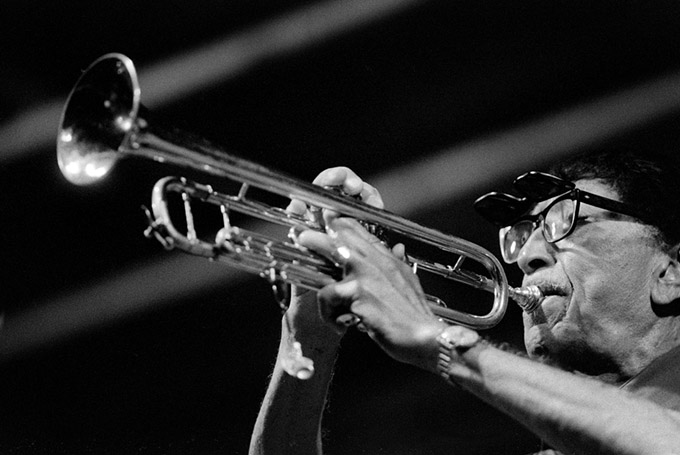
Doc Cheatham. Photo courtesy of allaboutjazz.
"Mahogany Hall Stomp,“ famously recorded by Louis Armstrong in 1929 for the Okeh label, is heard here in a performance recorded live at The Landing featuring the magnificent trumpeter and raconteur Doc Cheatham. In his 90th year, Doc scored a comeback on the jazz charts with an album recorded with Nicholas Payton.
In the early 1920s Joe ‘King’ Oliver was on the cutting edge of jazz cornet playing, and his Creole Jazz Band set the standard for hot jazz. Critics have remarked that King Oliver could make his cornet talk and even cry like a baby. “Doctor Jazz,“ heard on this broadcast, remains one of Oliver’s best-known tunes. In Jim Cullum’s cornet introduction one can hear the unique vocal-like mute manipulation pioneered by Oliver and copied by trumpet and trombone players through the years. Jelly Roll Morton made a famous 1926 recording of “Doctor Jazz” with his Red Hot Peppers for the Victor label; King Oliver’s enduring composition has more recently been recorded by Harry Connick, Jr.
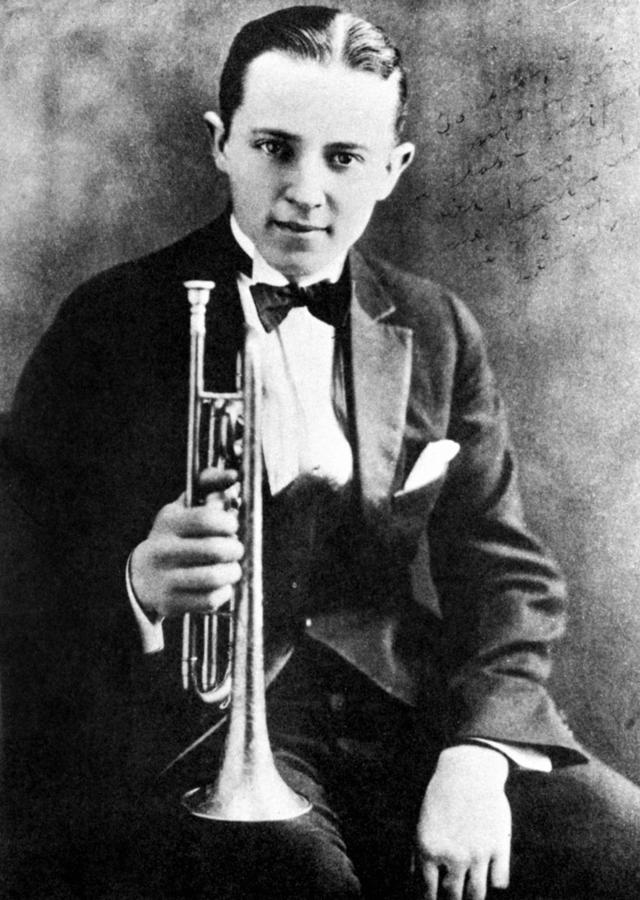
Bix Beiderbecke. Photo in public domain.
Jazz Age cornet great Bix Beiderbecke’s storied 1927 recording of “Blue River“ with Frankie Trumbauer and his Orchestra is a Jim Cullum favorite. Jim Cullum says, “It’s a beautiful piece; it has this feeling of melancholy that’s typical of Bix.” Here, Jim offers his rendition of “Blue River.”
January 26, 1925 after a late-night jam session with Hoagy Carmichael at the Ohio Theater in Indianapolis, Bix Beiderbecke and Hoagy headed out to the Gennett recording studio in nearby Richmond, Indiana in Carmichael’s new Ford. Hoagy tells the story that in the middle of the night he and Bix stopped the car by the side of the road. Drunk on jazz and full of themselves, they improvised a tune on their horns, blowing the sound out across the frozen prairie. In the morning they met up with the rest of the band at the studio, which included the young trombonist Tommy Dorsey. With little written music, the small ensemble captured Bix’s new composition in the ragtag studio by the side of the railroad tracks. Dorsey named it after Bix’s hometown, Davenport, Iowa. “Davenport Blues“ is one of the cornerstones of The Jim Cullum Jazz Band’s repertoire and their homage to genius of Bix Beiderbecke.

"Davenport Blues" record label,1925. Courtesy Starr-Gennett Foundation.
This radio show closes with “Krazy Kapers,“ a high-energy “riff” tune saxophonist and Riverwalk Jazz guest Benny Carter composed in 1933. The underlying chord changes are those of a hit song of the era made famous by Duke Ellington and composed by Fields and McHugh, “Digga Digga Do.”
Photo credit for Home Page: Doc Cheatham. Photo courtesy Riverwalk Jazz.
Text based on Riverwalk Jazz script by Margaret Moos Pick ©1999

